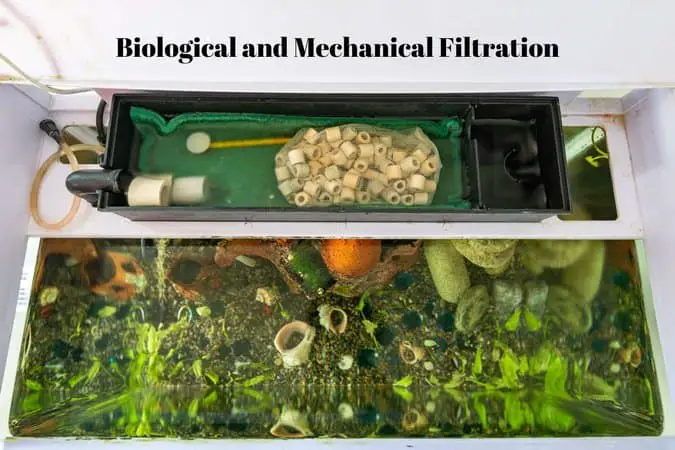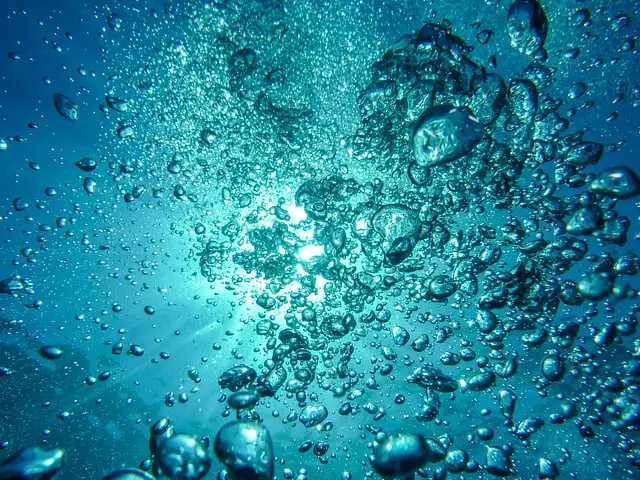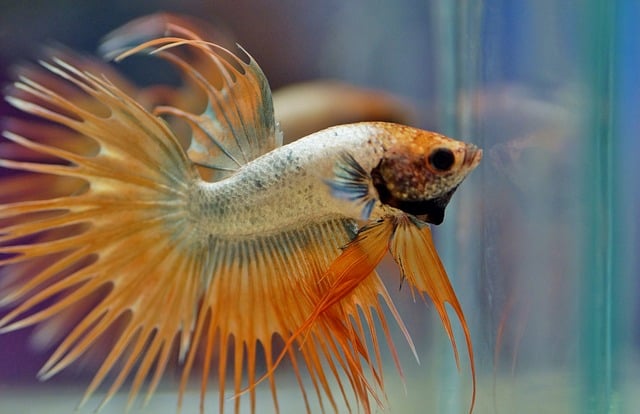If you’re an aquarium enthusiast, you might have come across the problem of fish getting stuck to filters. It’s a common issue, but it can be distressing to both the fish and the aquarium owner. Not only does it harm the fish, but it also affects the filtration system’s efficiency which leads to poor water quality.
In this article, we’ll learn what causes fish to get stuck to filters. We’ll also discover why certain styles of filters work better for different types of fish, how proper filter placement is crucial to fish safety, and what the necessary steps are to preventing fish from getting stuck to filters.
The Problem of Fish Getting Stuck to Filters
Fish getting stuck to filters is a common issue in aquariums. If fish get too close to the filter intake, they may get sucked in and stuck, leading to injury or death. The cause of this is too small fish. If you have a powerful filter, tiny fish can easily get caught up in the current being created by the equipment.
Importance of Preventing Fish from Getting Stuck to Filters
Preventing fish from getting stuck to filters is crucial for the well-being of both the fish and the aquarium environment. When fish die, it leads to an increase in ammonia levels which can harm other fish and plants in the tank.
Additionally, when the filter stops working due to clogs from dead fish, it can alter the water parameters, leading to problems like algae growth, cloudy water, and foul odor. Ensuring you have the right type of filter for the species of fish you keep as well as the size of the tank is crucial.
Understanding the Causes of Fish Getting Stuck to Filters
The 3 main causes of aquarium fish getting stuck to filters include the following:
Inadequate Filtration System
An inadequate filtration system can cause debris, food particles, and waste to accumulate in the filter, leading to clogs. When the filter is clogged, water can’t pass through properly which decreases water flow and increases suction. This makes it easier for fish to get stuck to the filter intake.
Fish Behavior and Habits
Some fish species – especially small ones – are more prone to getting stuck to filters than others. Fish that are weak, sick, or injured are also more likely to get sucked in. Additionally, fish that like to swim near the surface or around the filter intake are more at risk.
Poor Maintenance of Filtration System
A poorly maintained filtration system can lead to clogs and decreased water flow, making it easier for fish to get stuck to the filter intake. It’s important to clean the filter regularly and replace filter media when needed.

Types of Filters and Their Suitability for Different Types of Fish
There are 3 types of filters: mechanical, biological, and chemical. Each one has pros and cons and is suitable for different types of fish.
Mechanical Filters
Mechanical filters use a physical barrier to trap debris and waste. They’re effective at removing large particles but can get clogged easily. This type of filter is suitable for most types of fish but are not recommended for those that produce a lot of waste.
Biological Filters
Biological filters use beneficial bacteria to break down waste into less harmful substances. They’re effective at maintaining water quality and are suitable for most types of fish. However, they’re not as effective at removing large particles.
Chemical Filters
Chemical filters use activated carbon or other chemicals to remove impurities from the water. They’re effective at removing odors and discoloration but not as effective at removing debris and waste. They’re suitable for most types of fish but not recommended for tanks with live plants.
Proper Placement of Filters to Prevent Fish from Getting Stuck
When it comes to preventing fish from getting stuck to filters, the proper placement of the filtration system is crucial. Here are some key factors to consider when deciding where to place your filter:
Tank Size and Shape
The size and shape of your tank will influence the placement of your filter. In general, it’s best to place the filter at one end of the tank and the air pump at the other end to create a circular water flow. If you have a larger tank, you may need multiple filters to ensure adequate water circulation.
Dead Spots
Dead spots are areas of your tank where the water circulation is poor. These areas can become a trap for debris and uneaten food which can clog your filter and cause harm to your fish. To prevent dead spots, make sure that the water flow from your filter is directed towards all areas of your tank.
Water Flow
The water flow rate is another critical factor in preventing fish from getting stuck to filters. If the water flow is too strong, it can create a suction force that can trap and injure your fish. On the other hand, if the water flow is too weak, it can lead to poor filtration and a buildup of debris in your tank.
Ensuring proper water flow is imperative to a healthy tank. If you have a high flowing filter, you can stick a piece of foam over the end of the intake valve. This also helps to add another location for beneficial bacteria to grow.
Steps for Preventing Fish from Getting Stuck to Filters
Preventing fish from getting stuck to filters requires a combination of the right filtration system, proper placement, and regular maintenance. Here are four steps you can take to stop your fish from getting stuck to filters:
Choosing the Right Filter
Choosing the right filter is step one. As mentioned above, mechanical filters are best for removing debris and waste while biological filters are good for removing harmful chemicals and bacteria. Chemical filters are also helpful for removing impurities, but they shouldn’t be the primary filtration system.
Setting Up the Filtration System
Properly setting up your filtration system is step two. Make sure you place the filter in the right location and that it’s the appropriate size for your tank. Avoid putting it near dead spots where there’s little water flow – this can cause debris and waste to accumulate, increasing the risk of fish getting stuck to the filter.
Performing Regular Maintenance of the Filtration System
Performing regular maintenance on your filtration system to keep it in good working condition is step three. Replace filter media as needed and clean the filter regularly to prevent clogging. A clogged filter can cause a sudden change in water flow, leading to fish getting stuck to it.
Monitoring Fish Behavior and Tank Conditions
Observing your fish and monitoring their behavior is step four. If you notice changes in their behavior such as hiding, it may be a sign that something’s wrong with the filtration system or water quality. Check the water parameters regularly and adjust as needed to maintain optimal aquatic conditions.
Additional Measures to Prevent Fish from Getting Stuck to Filters
Preventing fish from getting stuck to filters is vital in keeping them healthy and eliminating unnecessary stress. While proper filter placement and maintenance are important, additional measures can also help prevent fish from getting stuck to filters. These include the following:
Using Filter Guards and Pre-Filters
Filter guards and pre-filters can be used to prevent fish from getting sucked into the filter. These devices cover the intake tube or the filter itself, preventing fish from coming into direct contact with the filter. They’re particularly useful for small fish and those with long fins or tails that may get tangled in the filter.
Adjusting the Water Flow Rate
High water flow rates can cause fish to get stuck to filters. By adjusting the water flow rate, you can prevent fish from getting sucked into the filter. However, it’s important to ensure that the water flow rate is not too low as this can also affect the filtration system’s efficiency.
Providing Adequate Hiding Places for Fish
Fish may get stuck to filters when they feel stressed or threatened. Providing plenty of hiding places such as plants, rocks, driftwood, caves, etc. can help reduce anxiety and prevent fish from getting stuck to filters.
Using Sponge Filters
Sponge filters are a type of biological filter that uses a sponge to trap debris and bacteria. They’re particularly useful for small tanks and delicate fish since they don’t create a strong current. Sponge filters are also easy to clean and maintain, making them a great alternative to traditional filters.
Frequently Asked Questions (FAQs)
Why do fish get stuck to filters?
Fish may get stuck to filters due to inadequate filtration systems, poor maintenance, or fish behavior and habits. Filters with strong currents can also cause fish to get sucked into the filter.
How often should I clean my filter?
It’s recommended to clean your filter once a month or as needed. However, if you notice a decrease in water flow or an increase in debris in the tank, you may need to clean your filter more frequently.
How can I tell if my filter is too strong for my fish?
If your fish are getting stuck to the filter or struggling to swim against the current, your filter may be too strong. You can adjust the water flow rate or consider using a filter guard or pre-filter to prevent fish from getting sucked into the filter.
Can I use a filter guard with any type of filter?
Filter guards can be used with most types of filters, but it’s important to ensure that the guard fits securely and doesn’t restrict water flow.
Can I prevent my fish from getting stuck to filters without a filter guard?
Proper filter placement and regular maintenance can help prevent fish from getting stuck to filters. Providing adequate hiding places and adjusting the water flow rate can also reduce the risk of fish getting sucked into the filter.
Final Thoughts
In conclusion, preventing fish from getting stuck to filters is necessary in keeping them healthy and preventing unnecessary stress. Understanding the causes of fish getting stuck to filters, choosing the right filter, proper filter placement, and regular maintenance can help stop this from happening.
Additional measures such as using filter guards and pre-filters, adjusting the water flow rate, providing hiding places, and using sponge filters can also reduce the risk of fish getting stuck to filters. By following these steps, you can help keep your pet fish healthy and happy for years to come.






